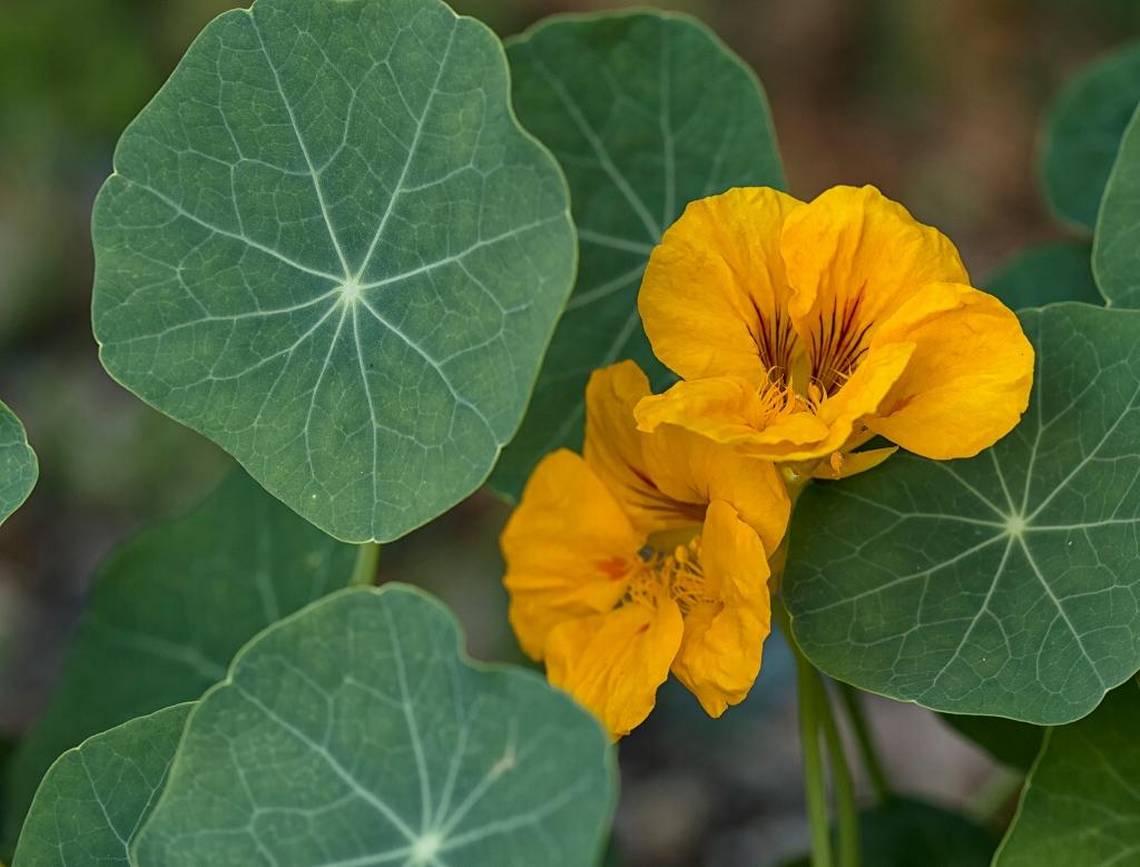What flower tolerates poor soil, little water and Miami’s summers — and is edible?

BY KENNETH SETZER
Fairchild Tropical Botanic Garden
As published in the Miami Herald, January 11, 2018 09:00 AM
There’s no downside to growing nasturtiums. They’re ridiculously easy to grow from seed, strikingly colorful and edible. The bright flowers have a magical association and history. They’re also considered excellent companion plants, offering a natural defense for cucumber and its relatives.

Nasturtiums quickly form neat little clusters. KENNETH SETZER Fairchild Tropical Botanic Garden
Tropaeolum majus is the common garden nasturtium, and to confuse things, Nasturtium is also a genus of plants in a completely separate family. The nasturtiums that we are concerned with (Tropaeolum sp.) are one of the few temperate plants that can supposedly endure our summers. However, I am growing them now, right through winter. They are usually available as seed; nasturtiums don’t appreciate transplanting. I find the seeds satisfyingly round and firm, like small dried peas.
I prepared pots with rich, well-draining soil with compost and extra perlite to avoid clumping, and poked a hole about an inch deep every 8 inches or so, dropped a seed in each, and carefully covered and watered them. Guess what happened! Nothing.
With a few leftover seeds in the packet, I more or less dumped them along a front walkway. A week later these seeds germinated, spread, and now flower constantly. Turns out nasturtiums like poor soil. I watered only every two or three days before seedlings appeared, and never since. They face west, just in front of some larger plants that filter the harshest midday sun but still allow hours of full sun to the nasturtiums.
The flowers can be so intensely colored that in the 18th century, Elizabeth Linnaeus —19-year-old daughter of botanist Carl Linnaeus — described seeing flashes of light emanating intermittently from nasturtium blooms in her family garden in early evenings. She published the observation in 1762, likening it to an electrical discharge or bioluminescence. It became known as the Elizabeth Linnaeus Phenomenon. But in the early 20th century, the phenomenon was shown to be an optical illusion.
Coincidentally, nasturtium flowers are high in lutein, a pigment possibly of use in maintaining vision and good eye health.

Nasturtium flowers and leaves are ready to pick and eat. KENNETH SETZER/Fairchild Tropical Botanic Garden
They’re also delicious, with a slight radish-like bite and nutty flavor. As salad toppings, they please the palate and astonish the eye. Before you eat them, look to right above where the stem meets the flower. The back of the flower seems to have a tube extending from it. This is a nectar spur, an appendage made famous by Darwin when he correctly predicted the rather long nectar spur on an Angraecum orchid must have co-evolved for a similarly long-tongued moth pollinator. For nasturtiums, the spur likely evolved for a hummingbird in its native Central and South America, though bees and beetles also frequent the flowers.
The foliage is also edible and offers a little spiciness. When harvesting the leaves, notice they float like lily pads, and are shaped similarly. The way the stem attaches underneath the leaf is described as peltate; lily pads, lotus, and the common lawn weed Hydrocotyle also show peltate foliage.
If you grow nasturtiums in pots, more frequent watering might be called for, but remember that while fertilizer may increase foliage, it will discourage flowers, so fertilizer is best avoided.
Next time you have dinner guests, feed them nasturtiums and impress them by casually mentioning that while picking the peltate leaves, you were dazzled by the Elizabeth Linnaeus Phenomenon but still managed to pick some delicious nectar spurs. Enjoy your lutein!
